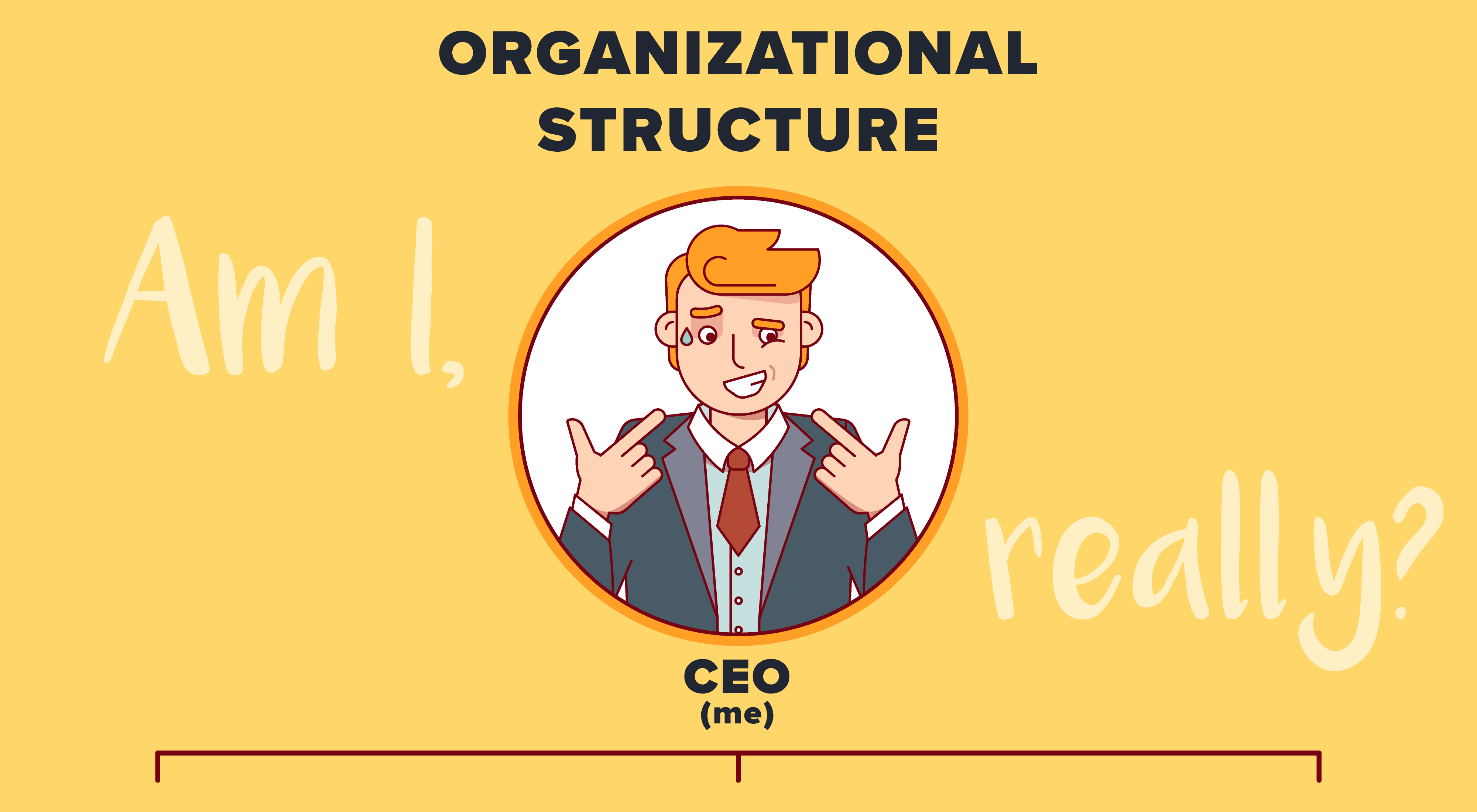Forums Search

Startup CEOs Aren't Really CEOs
Becoming a startup CEO requires zero qualifications — that's because we're often not really CEOs (for those that don't already know, a CEO is the chief executive officer of a company).
Anyone who founds a company is by default the CEO. My 9-year-old daughter incorporated her pet-sitting business and is technically its CEO. But she doesn't walk around comparing herself to Jeff Bezos.
As Founder-CEOs, we need to have a very sober outlook on our new title and as such, so do all of the people around us. After all, a successful startup CEO is responsible for more than a "company builder" — they are expected to create the company culture, form the leadership team, and keep everyone in the org moving in the right direction. We basically need to take...

Startup Company Cap Table
A capitalization table or "cap table" is a record of the equity ownership and actual ownership percentage of each member of the company. Private companies typically develop a cap table when they are first formed to capture the stock ownership of the co-founders and then later begin recording stock ownership of employees, advisors, and investors.
Why do Startups need Cap Tables?
The moment the number of shares in our startup expands to more than one owner, we typically create the company's cap table. This is just a ledger of where the company's ownership stands and can be captured in something as simple as a spreadsheet.
As our startup expands, cap table management becomes more complex, such as when we take on a funding round with a venture cap...

Idea Validation Process: The Elevator Pitch
Startups use their elevator pitch to quickly communicate their startup idea and value proposition in one or two sentences.
In our previous idea validation lessons, we focused on the importance of taking your initial idea and defining your problem, particular market, advantages, and customer needs. Now it’s time to refine those learnings into a polished Elevator Pitch and continue our startup idea validation.
The heart of every great Elevator Pitch includes 4 essential components:
ONE Nail The Problem
As we learned, great business ideas start with a well-defined problem and the ability to identify how painful that problem is. Now, we’ll concentrate on how to effectively articulate it in your elevator pitch.
TWO Explain The Solution
You’ve zeroed i...

Idea Validation Process: Customer Discovery
Intro to the Customer discovery process
Up to this point, we’ve made sure that there is a problem in the market for your business idea to solve through idea validation research and notable experts have verified that you’re on the right path. Now we begin the last test of the business idea validation process — customer discovery.
We’re using customer discovery as a methodical approach to ensuring the product idea you’ve identified aligns with what potential customers actually want at a price they are willing to pay.
Key Takeaway
Use idea validation to confirm that the problem, solution, and revenue model aligns with what potential customers really want.
Customer Discovery
Customer Discovery centers around 3 critical pillars of your business model ...

Idea Validation Process: Expert Validation
Intro to using experts to validate your startup ideas
Now that we know there is an opportunity in the market for our startup idea, we want to get some expert advice on how to approach that problem, target market, and industry.
Think of this phase as asking your college professor what the answers to the idea validation test are before you ever start the course.
In almost every case there are experts out there that know many of the answers you're looking for and are willing to share that information with you.
The challenge is to find the right experts and present them with very specific questions about your business idea, and in return get highly specific feedback.
Their feedback can help shortcut the market validation process, market research, ev...

Idea Validation Process: Overview and Introduction
Before we spend a dime on building anything, we’re first going to learn how to assess the feasibility and viability of our startup idea to see whether we should forge ahead with confidence, pivot, or go back to the drawing board altogether.
This should always be the first step for every Founder who is considering pursuing a startup idea. Broadly, this process is called idea validation.
Intro to the Business Idea Validation Process
As a Founder, chances are you’ve experienced the “eureka” moment — that feeling of capturing lightning in a bottle when you suddenly strike upon an idea that has you running to tell your friends, family members, and baffled strangers you encounter on the street (but probably not your target audience).
Nine times out o...

We Have SO Much Time Left in Our Careers
What if you found out today you'd live twice as long — what would you do differently?
For many of us, especially young startup Founders, our issue isn't whether we're going to live longer but instead recognizing how young we really are, and by virtue of that, how much time we truly have in front of us.
Without a good measure of how much time we have in front of us, we simply make really amateur mistakes. We rush things, we create endless anxiety, and we create a false narrative that the world will implode if we somehow get to "30" without being a huge success.
The reality is our misperception of time is a huge impediment to our career. It's not until we properly calibrate our path that we can start building the future we want at a pace that...

Quiet Quitting — How is it Impacting Startups?
What is Quiet Quitting and Why is it Important?
While it isn’t a new phenomenon, many of us might be familiar with the behavior but not have a term connected to it, that is, until now. You may have heard the term "quiet quitting" recently as the latest workplace trend, many thanks to influencers on TikTok, but it has been around long before social media ever existed. Generally, there are multiple definitions floating around as to what quiet quitting is, and what it means for the workplace.
Upon first hearing the term, many might mistake quiet quitting as slacking off at work, but that is not entirely true. Some people define it as not taking on more work and setting boundaries with employers to avoid burnout, while others say it’s simpl...

Startup Equity Mistakes to Avoid
Welcome to Phase One of a four-part Splitting Equity Series make sure to read Introduction - Early Startup Equity — Getting it Right before continuing on if you haven’t already.
Phase One - Startup Equity — Avoiding Early Mistakes ( ←YOU ARE HERE 😀)
Phase Two - How Startup Equity Works
Phase Three - How to Split Equity
Phase Four - Equity Management
We are excited to guide you through your equity-splitting experience. Let's continue!
Before we make a single equity split decision about co-founders or any of our founding teams, please read this section carefully. Nearly every bad decision startup founders make in setting up their equity splits is contained here.
This lesson is a primer on splitting equity among two founders or more and how to have a...

Splitting Startup Equity — Introduction
Welcome to our four-part Splitting Equity Series. This is our Introductory piece and will continue to be split up into four phases:
Introduction - Early Startup Equity — Getting it Right ( ←YOU ARE HERE 😀)
Phase One - Startup Equity - Avoiding Early Mistakes
Phase Two - How Startup Equity Works
Phase Three - How to Split Equity
Phase Four - Equity Management
We are excited to guide you through your equity-splitting experience. Let's dive in!
We’re going to identify and isolate each of the key issues in splitting startup equity in a young company. Then one by one we will lay out which options are available, how most startups address this problem, and what key decisions the team will need to make to split the founder equity fairly and ma...